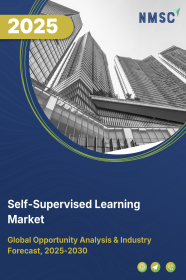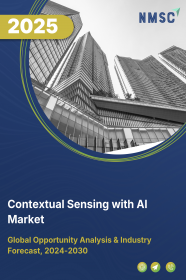
Asia-Pacific Wafer Handling Robots Market by Product Type (Vacuum Wafer Handling Robots and Atmospheric Wafer Handling Robots), by Number of Arms (Single Arm and Dual Arm), by Robot Type (Linear Robots, SCARA Robots, Articulated Robots, Cylindrical Robot, and Others), by Operation (Motor Driven and Belt Driven), by Installation (Free Standing and Integrated), by End Use (Integrated Device Manufacturer (IDM) and Foundries) –Opportunity Analysis and Industry Forecast, 2024–2030
Industry: ICT & Media | Publish Date: 21-May-2025 | No of Pages: 407 | No. of Tables: 294 | No. of Figures: 259 | Format: PDF | Report Code : IC2074
US Tariff Impact on Asia-Pacific Wafer Handling Robots Market
Trump Tariffs Are Reshaping Global Business
Asia-Pacific Wafer Handling Robots Market Overview
Asia-Pacific Wafer Handling Robots Market size was valued at USD 661.3 million in 2023, and is predicted to reach USD 1227.8 million by 2030, at a CAGR of 8.5% from 2024 to 2030. Also, the U.S. wafer handling robots market size was 18398.0 units in 2023, and is predicted to reach 47844.0 units by 2030, with a CAGR of 13.7% from 2024 to 2030.
A wafer handling robot represents a specialized robotic solution designed to streamline the complex procedures inherent in semiconductor manufacturing. These robots demonstrate exceptional proficiency in executing precise movements and positioning tasks with fragile semiconductor wafers. Their significance lies in their pivotal role in the creation of top-tier integrated circuits and microelectronic devices.
Operating within pristine cleanroom environments, they incorporate a diverse range of end effectors, sensors, and vision systems to securely grasp, inspect, and manipulate wafers, all while mitigating the risks of damage or contamination. By seamlessly integrating with other fabrication equipment, these robots not only boost operational efficiency and minimize errors but also foster the consistent production of cutting-edge semiconductor technologies that power an extensive array of contemporary devices.
Rapid Expansion of Semiconductor Industry Fuel the Growth of the Market
The growth of wafer handling robots in the Asia-Pacific region is primarily driven by the rapid expansion of the semiconductor industry. With the increasing demand for electronic devices, the semiconductor sector has experienced substantial growth, necessitating more efficient manufacturing processes.
This surge in semiconductor production drives the adoption of wafer handling robots, which play a crucial role in handling and processing semiconductor wafers with precision and efficiency. As semiconductor manufacturers strive to meet market demands and enhance production capabilities, the demand for advanced automation solutions like wafer handling robots continues to grow, fuelling the expansion of the market in the Asia-Pacific region.
Strong Government Support and Initiatives Propel the Growth of the Market
Another significant driver for the growth of wafer transfer robots in the Asia-Pacific region is strong government support. Governments in countries like China, India, and Thailand have launched initiatives and investments to bolster their semiconductor manufacturing capabilities, further boosting the demand for these automation solutions.
These initiatives include funding for research and development, incentives for semiconductor companies, and infrastructure development to support semiconductor manufacturing. The proactive stance of governments in supporting the semiconductor industry creates a conducive environment for the adoption of advanced manufacturing technologies, including wafer handling robots.
However, challenges such as the lack of consistent government support in some parts of the region and the dominance of major players like China and Japan in the semiconductor industry may pose obstacles to the widespread adoption and growth of wafer handling robots in the broader Asia-Pacific market.
High initial cost restrains the market growth
The considerable expense associated with wafer handling robots serves as a significant constraint on industry growth. The upfront investment needed to procure, integrate, and upkeep these advanced automation systems represents a substantial financial burden for companies, particularly those with budget constraints. This financial hurdle has the potential to deter prospective adopters from entering the market or scaling up their automation capabilities.
Incorporation of Advanced Technologies such as Computer Vision and AI to Enhance Precision
Incorporating cutting-edge technologies such as Artificial Intelligence (AI), computer vision, and the Internet of Things (IoT) into robots presents extensive opportunities for market expansion. These integrations empower wafer handling robots to streamline processes, increase operational efficiency, and enable predictive maintenance. AI algorithms play a vital role in refining robot movements, improving quality control by identifying defects in real-time, and predicting maintenance needs.
Computer vision ensures accurate handling of wafers and precise object recognition, even in complex operational settings, while IoT connectivity enables real-time monitoring, data exchange, and predictive maintenance, thereby reducing downtime. Additionally, advanced safety features, data analytics capabilities, and enhancements in energy efficiency further underscore the importance of wafer handling robots as indispensable assets within the dynamic semiconductor manufacturing landscape.
China Holds the Dominant Market Share in Asia-Pacific Wafer Handling Robots Market
According to the Semiconductor Industry Associations, China's semiconductor market was valued at $13 billion, representing only 3.8% of global chip sales. However, in 2020, China's semiconductor sector experienced remarkable growth, with a staggering 30.6% increase, reaching an annual revenue of $39.8 billion.
Notably, China is actively investing in its semiconductor manufacturing sector, as evidenced by the announcement of 28 new fab construction projects with a combined funding of $26 billion in 2021. This substantial expansion in chip sales is largely attributed to strong government support. China has set ambitious goals to enhance its domestic semiconductor production, aligning with a broader political vision aimed at achieving technological supremacy by 2049, coinciding with the 100th anniversary of the founding of the People's Republic of China.
Moreover, semiconductors have been a focal point of the state-led industrial policy initiative "Made in China 2025," initiated by the Chinese government in 2015. This initiative aims to increase the country's chip production from less than 10% of demand to 40% in 2020 and 70% in 2025.
In the context of wafer handling robots, this growth underscores the rising demand for advanced automation and robotics in China's semiconductor manufacturing sector. These investments are essential for meeting ambitious production goals and sustaining competitiveness on a global scale.
India to Witness Substantial Growth in the Asia-Pacific Wafer Handling Robots Market
The growing governmental efforts in India, particularly in the sphere of semiconductor labs, are driving the expansion of the market for wafer handling robots. A notable initiative introduced by the Indian government as of January 2022 is the 'Semiconductor Fabs Establishment Initiative,' which boasts a budget exceeding $10 billion.
This initiative is strategically designed to provide financial support and assistance to individuals and organizations seeking to establish semiconductor fabrication facilities within India. The primary objective of this program is to attract significant investments into semiconductor wafer fabrication facilities, thereby strengthening the electronics manufacturing sector in India.
With a planned duration of six years, the initiative aims to offer financial support tailored to facilitate the establishment of Silicon CMOS-based semiconductor fabs in India, aligning with the specific technological node requirements of the industry. This surge in government-led semiconductor initiatives directly corresponds to the increased demand for wafer handling robots within the Indian market.
Competitive Landscape
Asia-Pacific wafer handling robots industry comprises various market players, such as include Kawasaki Heavy Industries, Ltd., Nidec Instruments Corporation, Yaskawa Electric Corp., RORZE Corporation, DAIHEN Corporation, Hirata Corporation, Rexxam Co., Ltd., KUKA AG, ULVAC, Inc., and Stäubli International AG.
Asia-Pacific Wafer Handling Robots Market Key Segments
By Product Type
-
Vacuum Wafer Handling Robots
-
Atmospheric Wafer Handling Robots
By Number of Arms
-
Single Arm
-
Dual Arm
By Robot Type
-
Linear Robots
-
SCARA Robots
-
Articulated Robots
-
Cylindrical Robot
-
Others
By Operation
-
Motor Driven
-
Belt Driven
-
Stainless Steel Belts
-
Rubber Belts
-
Polymer Belts
-
By Installation
-
Free Standing
-
Integrated
By Wafer Size
-
Up to 100 mm
-
150 mm
-
200 mm
-
300 mm
-
Above 300 mm
By Semiconductor Process
-
Oxidation (Deposition)
-
Lithography
-
Etching, Cleaning, Polishing
-
Inspection & Testing
-
Assembly & Packaging
By End Use
-
Integrated Device Manufacturer (IDM)
-
Foundries
By Country
-
China
-
Japan
-
India
-
South Korea
-
Australia
-
Malaysia
-
Singapore
-
Taiwan
-
Thailand
REPORT SCOPE AND SEGMENTATION:
|
Parameters |
Details |
|
Market Size in 2023 |
USD 661.3 Million |
|
Revenue Forecast in 2030 |
USD 1227.8 Million |
|
Growth Rate |
CAGR of 8.5% from 2024 to 2030 |
|
Market Volumes in 2023 (units) |
18398.0 |
|
Volumes Forecast in 2030 (units) |
47844.0 |
|
Growth Rate |
13.7% |
|
Analysis Period |
2023–2030 |
|
Base Year Considered |
2023 |
|
Forecast Period |
2024–2030 |
|
Market Size Estimation |
Million (USD) |
|
Growth Factors |
|
|
Countries Covered |
9 |
|
Companies Profiled |
10 |
|
Market Share |
Available for 10 companies |
|
Customization Scope |
Free customization (equivalent up to 80 working hours of analysts) after purchase. Addition or alteration to country, regional, and segment scope. |
|
Pricing and Purchase Options |
Avail customized purchase options to meet your exact research needs. |
KEY PLAYERS
-
Kawasaki Heavy Industries, Ltd.
-
Nidec Instruments Corporation
-
Yaskawa Electric Corp.
-
RORZE Corporation
-
DAIHEN Corporation
-
Hirata Corporation
-
Rexxam Co., Ltd.
-
KUKA AG
-
ULVAC, Inc.
-
Stäubli International AG

















 Speak to Our Analyst
Speak to Our Analyst





















